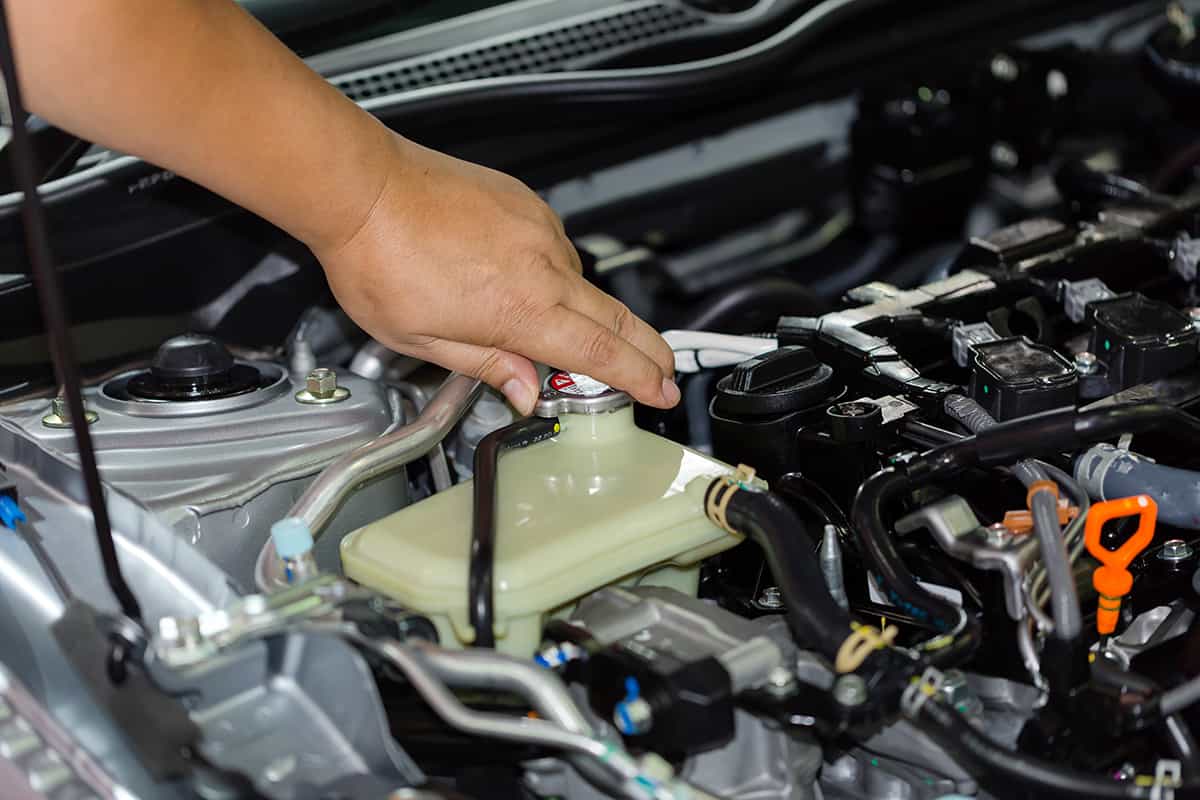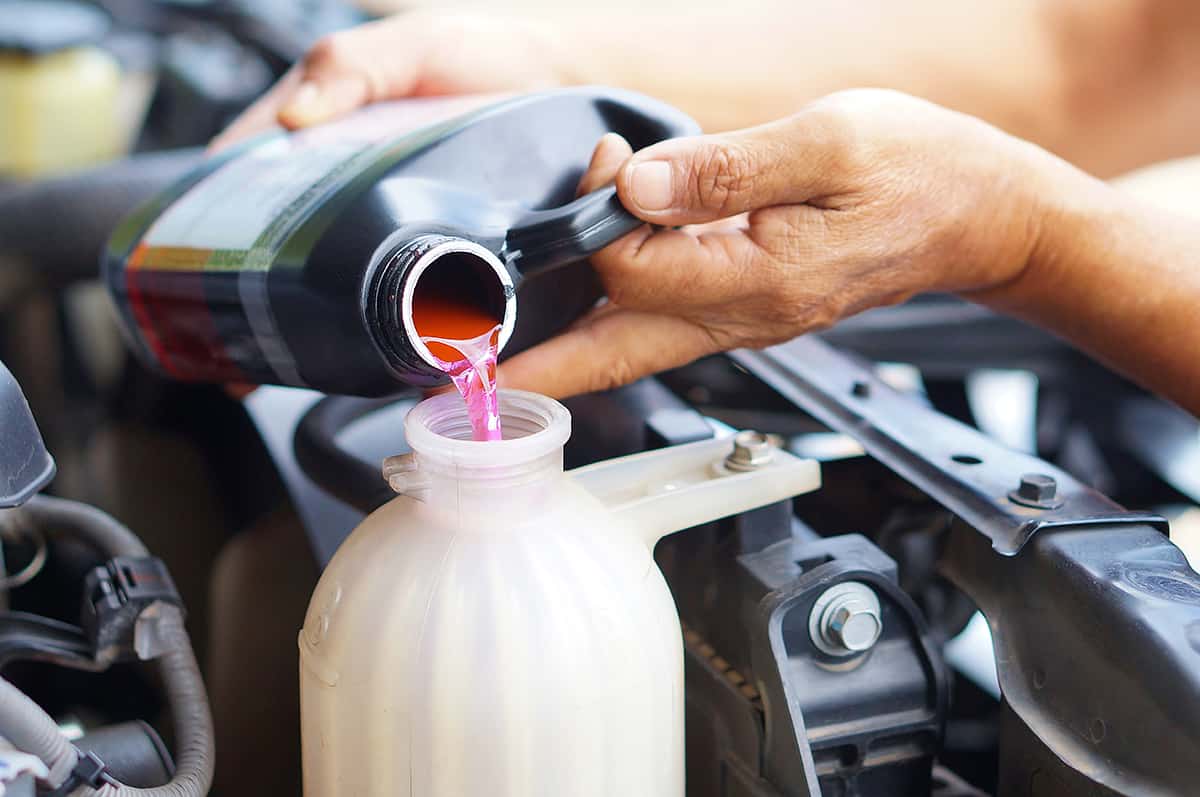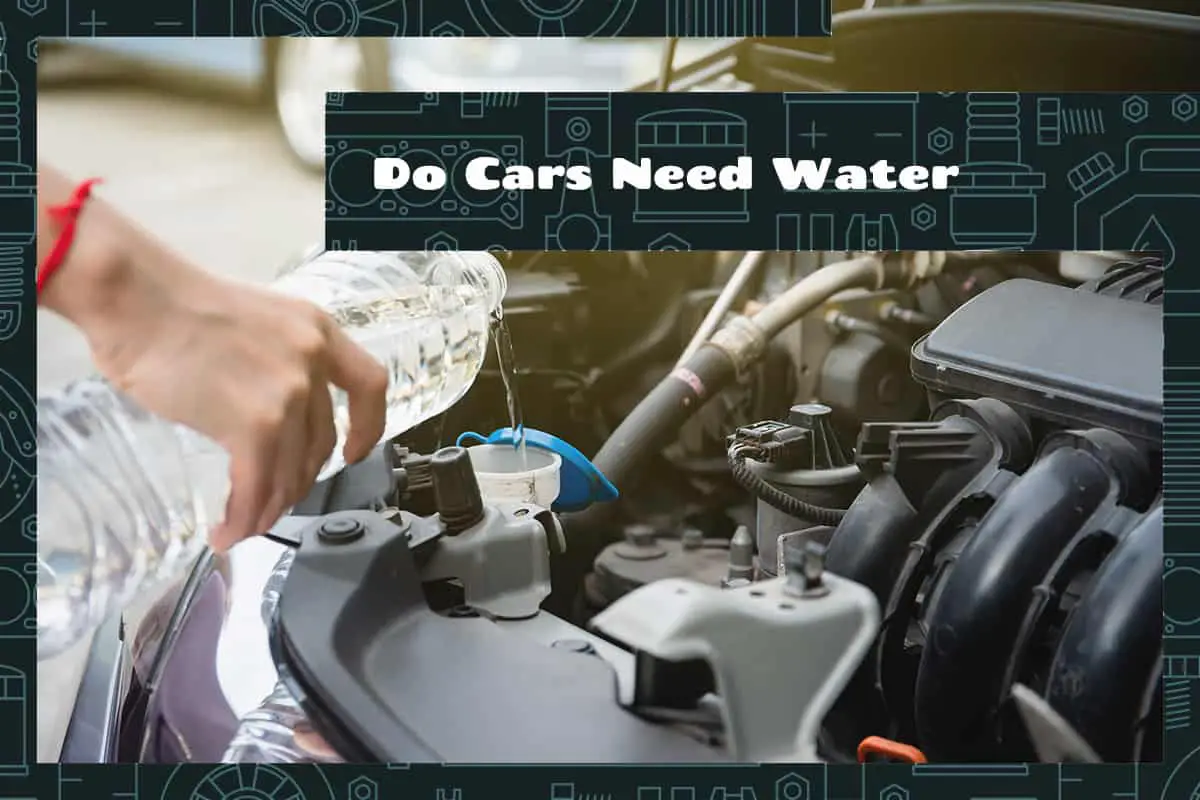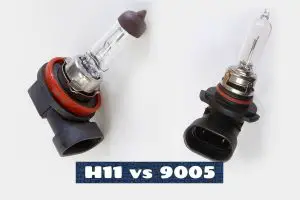The cooling system ensures the engine runs at an optimal temperature. Its job is to regulate heat and prevent the engine from overheating and wearing out prematurely. Something you may have found people doing is pouring water into their radiator tank. Should you do this, too?
You can use water as a coolant during emergencies, but it should not be your primary coolant. There are specific coolants for car radiators, which are much more effective in managing heat.
Today, we will learn about using water in car cooling systems, why you should use coolant instead, and how to mix and use coolant for your vehicle.
Basics of a Car Cooling System

The cooling system maintains the engine’s temperature. This system uses coolant to absorb excess heat and dissipate it through the radiator.
How Does a Car Cooling System Work
A car’s cooling system consists of several key components working together to regulate the engine’s temperature.
- Thermostat: Controls the flow of coolant, allowing it to circulate when the engine reaches a certain temperature.
- Water Pump: Circulates the coolant, driven by the engine’s serpentine belt.
- Radiator: A heat exchanger that cools the hot coolant by airflow.
- Coolant: A mixture of water and antifreeze absorbs the engine’s heat.
- Hoses: Tubes that carry coolant between the engine, radiator, and other components.
- Fans: Help in cooling the radiator when the car is not in motion.
The system operates in a continuous loop, where the water pump circulates the coolant through the engine, absorbing heat, and then through the radiator, where it loses heat to the atmosphere. The cooled coolant then returns to the engine, and the process repeats.
Importance of Temperature Regulation
Regulating the engine’s temperature is crucial for several reasons:
- Performance Efficiency: An engine operating at the right temperature will perform more efficiently, leading to better fuel economy.
- Preventing Overheating: If the cooling system fails, the engine can overheat, leading to severe damage such as warped cylinders or cracked heads.
- Maintaining Oil Viscosity: The engine oil must remain at the correct viscosity for proper lubrication. Extreme temperatures can break down the oil, causing wear.
- Emission Control: Proper temperature regulation helps the engine burn fuel more cleanly, reducing emissions.
Water as a Primary Coolant
Water has unique physical properties, making it a primary choice for absorbing and transferring heat within the system. Here, we’ll focus on those unique qualities and the pros and cons of using it as a coolant in your car.
- High Heat Capacity: Water can absorb a substantial amount of heat without a significant change in temperature. This makes it efficient in absorbing engine heat.
- Non-Toxic: Water is a non-toxic substance, making handling and disposal easier.
- Thermal Conductivity: Its high thermal conductivity helps in fast heat transfer from the engine to the radiator.
Now, should you use water as a coolant in your car? The straightforward answer is that you should not use water as a sole coolant. However, you can do so during emergencies. For instance, if your car’s engine is on the verge of overheating (as indicated by the temperature sensor on your dashboard), you can pull over, let the engine cool down, and pour water into the radiator reservoir.
Why You Should Use Coolant Instead of Water

Using coolant instead of water in a vehicle’s cooling system can significantly impact the car’s performance, maintenance, and overall life span. Let’s see why this is the case in more detail below.
1. Improved Engine Performance and Efficiency
The impact of using coolant instead of water extends beyond mere temperature regulation. By maintaining the engine at its optimal operating temperature, coolant ensures that the engine runs smoothly and efficiently.
This temperature control contributes to better fuel efficiency, more effective lubrication of moving parts, and reduced emissions. Coolant also helps maintain the viscosity of engine oil and other essential fluids.
These effects combine to create a more efficient engine that burns fuel more cleanly and reduces wear on moving parts.
2. Enhanced Protection Against Temperature Extremes
One of the critical drawbacks of using pure water in a cooling system is its limited resistance to temperature extremes. Water freezes at 0°C (32°F) and boils at 100°C (212°F), which can cause problems in extremely cold or hot weather conditions. Freezing can lead to blockages, while boiling can result in overheating.
Coolant, on the other hand, is formulated to perform consistently across a broad range of temperatures. It contains antifreeze, which significantly lowers the freezing point, and additives that raise the boiling point. This ensures that the cooling system continues to function effectively in various climates without the risk of freezing or overheating.
3. Corrosion and Rust Prevention
Water, while an effective heat absorber, can cause corrosion and rust within the cooling system. The metal components of the engine and cooling system are particularly susceptible to these issues when exposed to water.
Coolant is engineered with anti-corrosion additives that form a protective barrier on the metal surfaces, preventing the corrosive action of water. Moreover, specialized coolants maintain the system’s pH balance, preventing acidic or alkaline reactions that can further cause wear and tear.
4. Reduced Maintenance Requirements
Water alone doesn’t provide the lubrication and protective qualities that modern engines require. In contrast, coolant is designed to last longer between changes.
Many commercial coolants come premixed with the correct ratio of water and antifreeze, removing the need for car owners to measure and mix these components themselves. This convenience can save time and prevent errors in mixing, which might otherwise lead to suboptimal performance.
How to Add Coolant to Your Car
Instead of using straight-up water to cool your car down, you should use coolant—a mixture of water and antifreeze. Here’s how you do it.
When to Add Coolant
- Checking Coolant Levels: Regularly inspect the coolant reservoir to ensure it’s filled to the marked levels. If it’s below the minimum level, adding coolant is necessary.
- Check for Overheating Signs: Overheating warnings on the dashboard or increased engine temperature might signal low coolant levels.
Selecting the Right Coolant for Your Car
- Consulting the Owner’s Manual: Coolants come in different colors and formulations. The car’s manual will specify the type and brand of coolant suitable for your vehicle.
- Avoiding Mixing Coolants: Mixing different types of coolants can lead to engine damage. Stick to the coolant type recommended by the manufacturer.
How to Mix Your Own Coolant
- Identifying Concentration Needs: Most coolants are sold as a concentrated liquid and need to be mixed with water. Typical proportions are 50% coolant and 50% distilled water, but certain climates may require different ratios (60:40 for colder climates and as far as 20:80 in hot places).
- Using Distilled Water: Tap water may contain minerals that can cause corrosion, so always use distilled water.
- Mixing in a Separate Container: Combine the coolant and water in a clean container before adding to the car to ensure proper mixing.
- Storing Extra Mixture: If you make more than needed, store it in a clearly marked container for future use.
Adding the Coolant to Your Vehicle
- Locating the Coolant Reservoir: This is usually a transparent container with a colorful cap, located near the radiator.
- Opening the Reservoir Carefully: Slowly unscrew the cap (after ensuring the engine is cool) to release any built-up pressure.
- Pouring the Coolant: Using a funnel, pour the coolant mixture slowly into the reservoir until it reaches the recommended level.
- Rechecking the Level: After running the car briefly, let it cool and recheck the coolant level. Top up if necessary.






